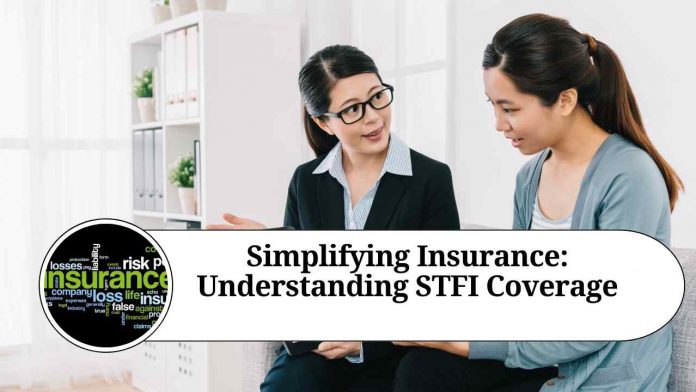Introduction
Insurance is a vital tool that provides financial protection against unforeseen events and risks. In the world of insurance, there are numerous types of coverage available, each serving a specific purpose. One such coverage, often abbreviated as STFI, plays a crucial role in safeguarding policyholders from losses caused by theft, fire, or incidents. In this blog post, we will delve into the world of insurance and explore what STFI coverage entails, how it works, and why it is essential.
What is STFI?
STFI stands for “Storm, Theft, and Fire Insurance.” It is a comprehensive insurance coverage designed to protect individuals, homeowners, and businesses from losses caused by incidents such as storms, theft, and fire. STFI coverage provides financial compensation for damages to insured property, belongings, or assets resulting from these events.
Understanding the Coverage
Storm: Storms can cause significant damage to properties, including homes, businesses, and vehicles. Storm damage can arise from windstorms, hurricanes, tornadoes, hailstorms, or other severe weather conditions. STFI insurance covers the cost of repairs or replacement for damages caused by storms, helping policyholders recover their losses.
Theft: Theft is an unfortunate reality that can impact anyone, regardless of their location or socioeconomic background. STFI coverage protects policyholders against losses due to theft, burglary, or robbery. If personal belongings or property are stolen, the insurance company reimburses the policyholder for the value of the stolen items up to the policy’s limits.
Fire: Fire is a devastating event that can cause extensive damage to properties and pose significant risks to individuals’ lives. STFI insurance provides coverage for fire-related losses, including damage to buildings, personal belongings, and assets. The policy covers the cost of repairs, rebuilding, or replacement, easing the financial burden on the policyholder.
Importance of STFI Coverage
Financial Protection: STFI insurance offers financial protection and peace of mind to policyholders. It ensures that in the event of a storm, theft, or fire, individuals and businesses are not left to bear the full financial burden alone. Instead, the insurance company shares the risk and provides compensation for the losses suffered.
Property Protection: Homes, businesses, and personal belongings are valuable assets that people work hard to acquire. STFI coverage ensures that if these assets are damaged or destroyed, individuals can recover and rebuild without facing excessive financial strain.
Business Continuity: For businesses, the impact of storms, theft, or fire can be devastating. The costs of repairs, replacement of equipment, and downtime can be overwhelming. STFI insurance helps businesses get back on their feet quickly, minimizing disruption and allowing them to continue operations.
Peace of Mind: Knowing that one’s property and belongings are protected by STFI insurance brings peace of mind. It allows individuals to focus on their daily lives, work, and family, without constantly worrying about the potential financial repercussions of unexpected events.
Conclusion
STFI coverage, encompassing Storm, Theft, and Fire Insurance, is an essential aspect of the insurance industry. It provides individuals, homeowners, and businesses with the necessary financial protection against losses caused by storms, theft, and fire incidents. By understanding the coverage and obtaining suitable policies, individuals can ensure their valuable assets are safeguarded, allowing them to navigate unexpected events with greater peace of mind. Remember to consult with insurance professionals to find the right STFI coverage for your specific needs, as policies and coverage limits may vary.
Read more useful content:
Frequently Ask Questions
Q: What does STFI stand for in insurance?
A: STFI stands for “Storm, Theft, and Fire Insurance.”
Q: What does STFI insurance cover?
A: STFI insurance provides coverage for losses resulting from storms, theft, and fire incidents. It includes damages to property, personal belongings, and assets caused by these events.
Q: Can you provide examples of storm-related damages covered by STFI insurance?
A: Storm-related damages covered by STFI insurance include those caused by windstorms, hurricanes, tornadoes, hailstorms, and other severe weather conditions. This can involve damage to buildings, vehicles, or other property.
Q: What types of theft are covered by STFI insurance?
A: STFI insurance covers losses resulting from theft, burglary, or robbery. It includes the theft of personal belongings, valuable items, or damage caused during a break-in.
Q: What fire-related losses does STFI insurance cover?
A: STFI insurance covers losses resulting from fires, including damage to buildings, personal belongings, and assets. It provides coverage for repairs, rebuilding, or replacement costs.
Q: Who can benefit from STFI insurance?
A: STFI insurance is beneficial for individuals, homeowners, and businesses who want financial protection against losses caused by storms, theft, or fire incidents.
Q: Why is STFI insurance important?
A: STFI insurance is important because it offers financial protection and peace of mind. It helps policyholders recover from the financial losses incurred due to storms, theft, or fire, allowing them to rebuild and continue their daily lives or business operations.
Q: Does STFI insurance cover natural disasters like earthquakes or floods?
A: STFI insurance typically does not cover natural disasters like earthquakes or floods. Separate insurance policies, such as earthquake insurance or flood insurance, are usually required to protect against these specific risks.
Q: How can I obtain STFI insurance?
A: To obtain STFI insurance, you can contact insurance providers or insurance agents/brokers who specialize in property and casualty insurance. They can guide you through the process of selecting the right policy and coverage limits based on your needs.
Q: Are there specific limits to the coverage provided by STFI insurance?
A: Yes, STFI insurance policies often have coverage limits, which represent the maximum amount the insurance company will pay in the event of a covered loss. It’s important to review and understand these limits when choosing a policy to ensure adequate coverage for your property and belongings.




















